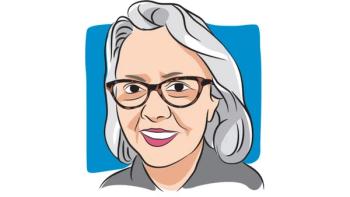
What is the Role of Physical Therapy in Cancer Recovery?
To restore strength, endurance and vitality, make rehabilitation part of your cancer treatment.
When someone is undergoing cancer treatment, physical therapy may not be the first healthcare field that comes to mind. Early cancer treatment is met with oncologists, radiologists, nurses and surgeons. Rightly so, as these healthcare practicioners are essential to the treatment and management of cancer. However, you should also consider the role of physical therapy in your cancer recovery.
Cancer rehabilitation is a growing area in medicine due to the increase in cancer survivorship. More and more individuals are beating cancer because of advances in medical technology, treatment and early detection. According to recent research from the American Cancer Society, the five-year survival rate of all cancers that were diagnosed between 2003 and 2009 is 68 percent. This is a 20 percent increase from 1975 to 1977. It is also estimated that over 13 million Americans have a history of cancer, and in 2014 there were an expected 1.6 million new cases. This means that the number of cancer survivors will continue to increase in the U.S. With more cancer survivors, there will need to be more recovery strategies.
Cancer treatment is a grueling course, leaving many people exhausted, weak and with a compromised immune system. Just getting out of bed can be a huge and daunting task, let alone exercising in a gymnasium or playing at the park with grandchildren. This is where a physical therapist comes in. Despite advances in medical treatments, individuals that receive cancer treatments typically experience extensive physical limitations during and after treatments. These limitations include and are not limited to cancer-related fatigue (CRF), pain, nerve damage, lymphedema, deconditioning, as well as incontinence.
There is strong evidence to support conservative management of these impairments through physical therapy. As each individual experiences different impairments during and after cancer treatment, it is important to have an individualized evaluation to focus your rehabilitation. Physical therapy can address common cancer related impairments including:
Lymphedema: Effective lymphedema management is accomplished through manual lymph drainage, range of motion exercises, aerobic exercise, and lymphatic bandaging.
CRF: Individualized aerobic training, strength training and functional management training is known to reduce effects of cancer related fatigue both during and after medical cancer treatments.
Pain: There are many pain relief strategies that can reduce the intensity and frequency of pain after cancer treatment. Specifically, treatment strategies including soft tissue mobilization, therapeutic massage, modalities, therapeutic stretching and strengthening.
Peripheral neuropathy: Often times, cancer survivors experience peripheral neuropathy, which is abnormal nerve function that can be experienced as pain, numbness and tingling. Physical therapy can help to improve nerve function or compensate for nerve dysfunction.
Deconditioning: Rebuilding endurance for activities and cardiovascular function can be difficult during and after cancer treatment. A skilled physical therapist is able to educate and monitor cardiovascular endurance training.
Genitourinary complications: For men undergoing treatment for prostate cancer and women undergoing treatment for bladder or ovarian cancer, incontinence and sexual dysfunction are common. A skilled physical therapist can help to rebuild the strength of the pelvic floor in order to improve urinary continence and reduce pain related to sexual function.
In a recent study published April 2015 in Physical Therapy Journal, researchers found that physical therapy services are more commonly sought out for individuals surviving breast and genitourinary cancers. Researchers sought to find the characteristics of patients with cancer that were referred for outpatient physical therapy and common clinical findings. Over the course of two years, data from 418 patients were analyzed. Genitourinary and breast cancers were the most common types of cancer in their sample. The most common impairments were strength loss and soft tissue dysfunction. Lymphedema was the most common issue for people with breast cancer and incontinence was the most common complaint for people that had genitourinary cancers. They also noted that pain and high fatigue levels were prevalent in individuals that had undergone radiation therapy. This study shows that therapy services are being utilized for individuals that have survived cancer, particularly breast and genitourinary cancer. However, this study also suggests that a large portion of cancer survivors are not seeking out rehabilitation services, even though they would likely find it highly beneficial.
The good news is that it is never too late to utilize rehabilitation services for cancer recovery. If you find that you are having trouble accomplishing daily tasks or functioning at your prior level of independence, seek out a rehabilitation expert and regain your vitality.
1. Alappattu Meryl et al. Clinical Characteristics of Patients with Cancer Referred for Outpatient Physical Therapy. Physical Therapy. April 2015 95 (4) 526-538.




